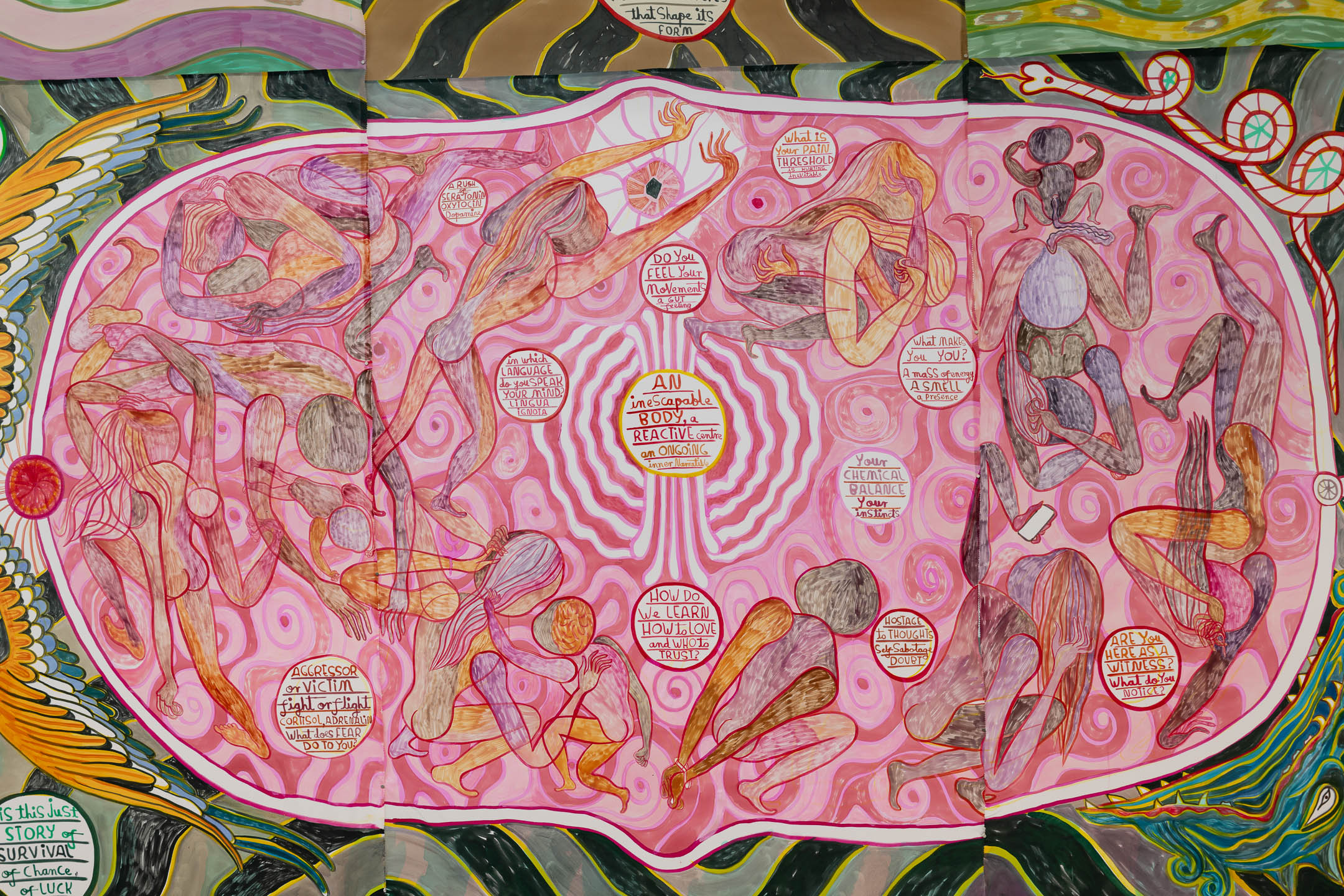Heather Jones: The Human Experience at Kunsthall Stavanger includes monumental silk paintings, drawings, 3D works, and video animations. You prefer to use the term “3D works” rather than “sculpture”, and you previously mentioned that the works function as three-dimensional drawings. Could you speak more about the relationships between the different mediums you use? Do you consider all of the mediums included in this exhibition expressions of drawing?
Emma Talbot: Drawing is the basis of my work – I generate ideas through immediate drawing with watercolour on Khadi paper. There are some drawings in the exhibition that are good examples of the kinds of images I draw. I make them without any plan, just downloading what I’m thinking. Sometimes they also include text or can be abstract. Drawing opens out my thinking and can surprise me and once I see a subject emerging, I decide how best to develop the works. If there’s a particularly strong sequential narrative thread I want to pursue, I might make an animation by digitally cutting up and moving/animating my drawings. If I want something to be physically present with a non-linear narrative, I’d make silk hangings and if I wanted to crystallise an idea as a physically present thing, emphasized by its materiality, I’d make a 3d work. I deliberately don’t emphasise categorisations like ‘sculpture’ and ‘painting’ because they come with such big histories, that determine a lot about how they’re made. I prefer to think of my work as something free of determinants, in which anything could happen. It helps me feel a kind of liberation.
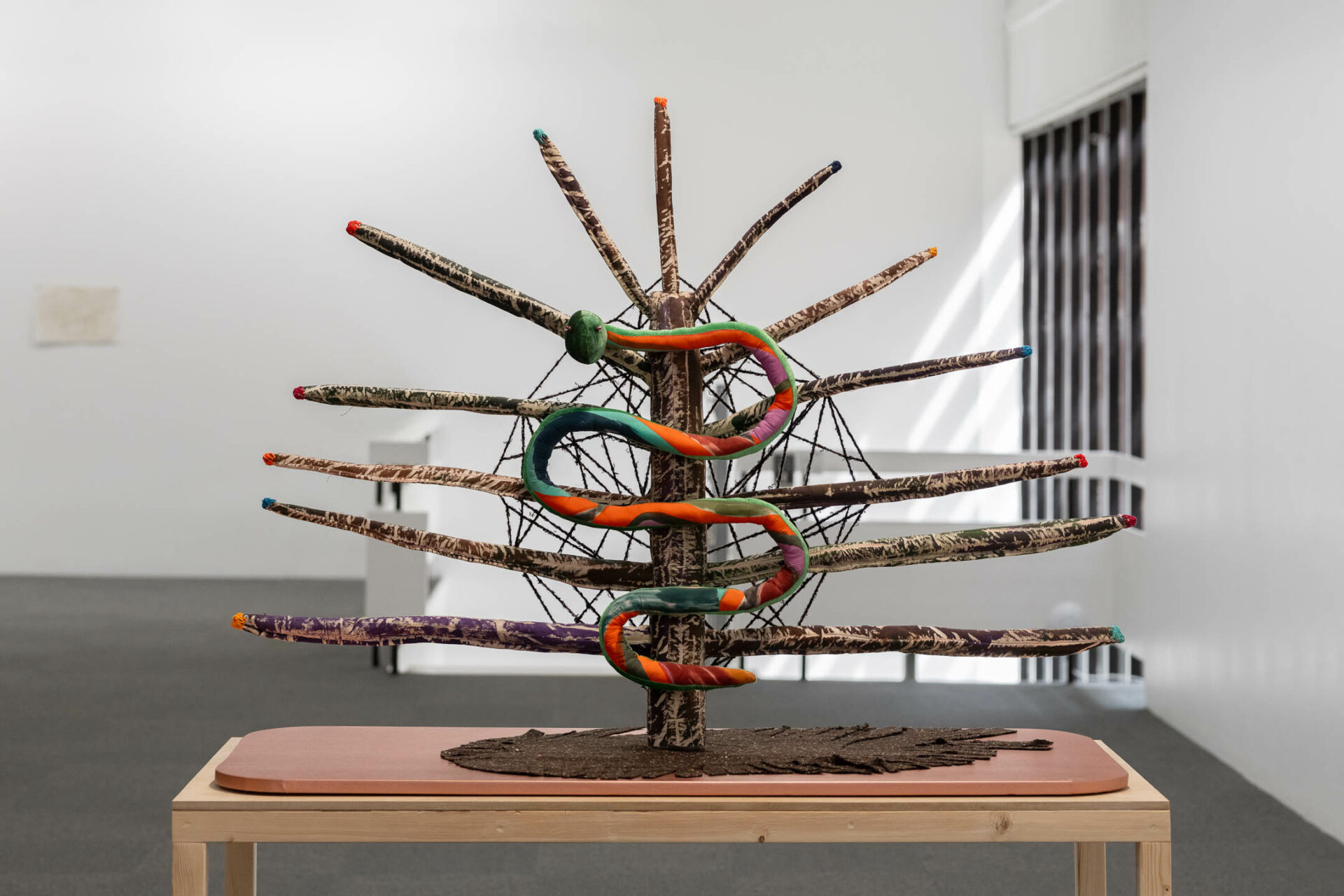
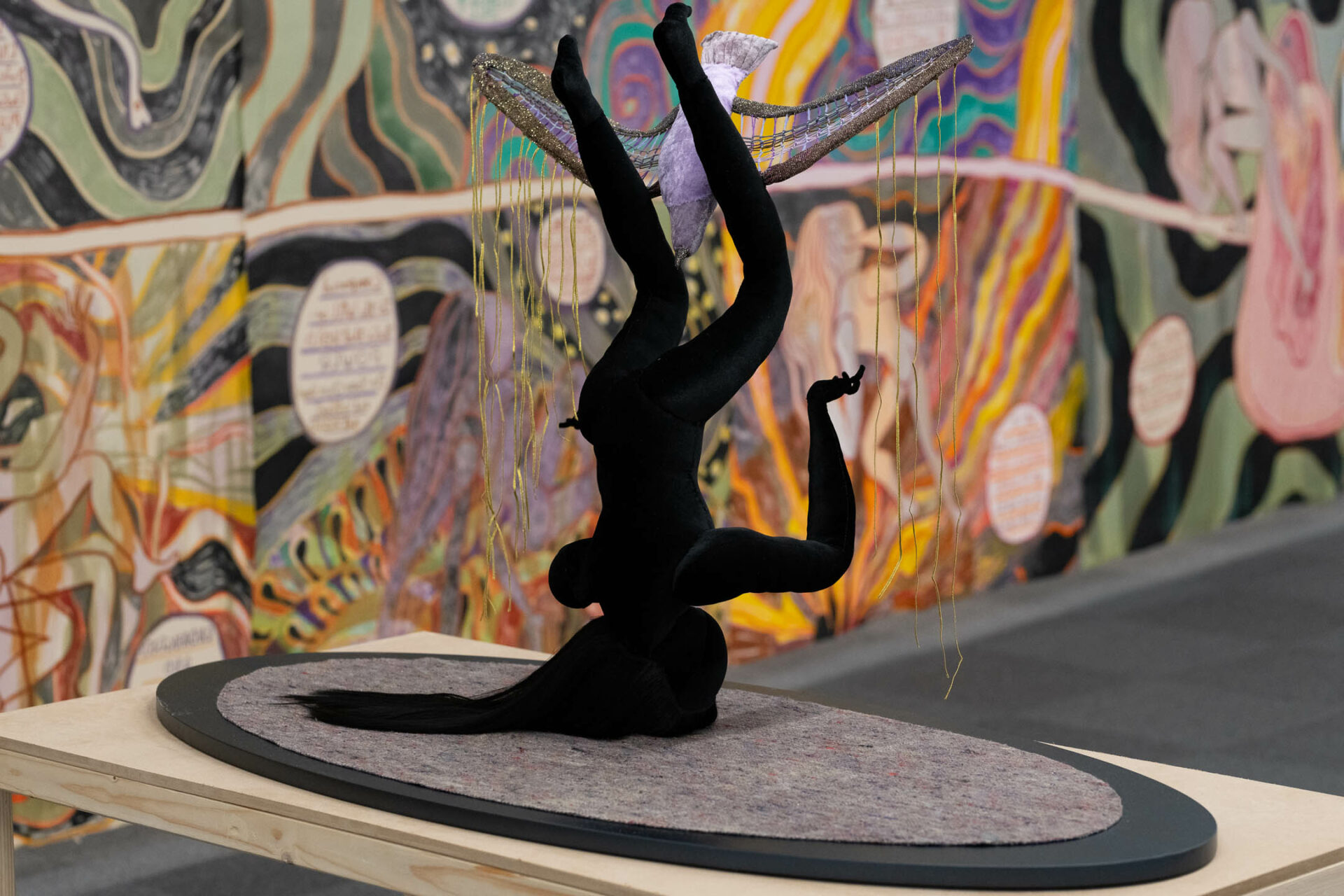
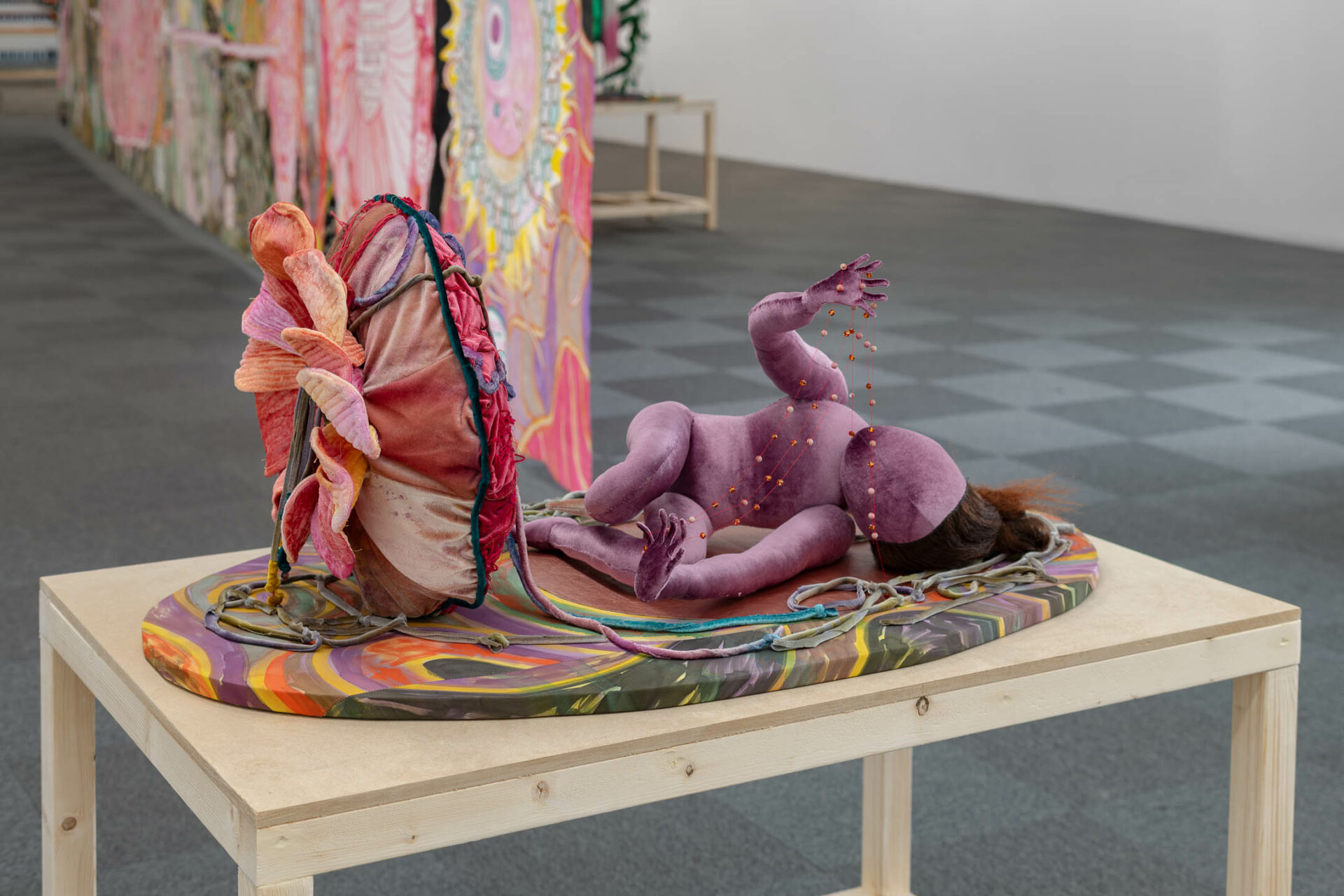
HJ: At Kunsthall Stavanger, the exhibition space is dominated by two paintings on silk that illustrates the life span of a human: birth, death, and everything that happens in between. My experience of the painting was that the tactility of the silk – the smooth surface and graceful movement in the gallery – provided a soft landing for some of the overwhelming emotions brought forth by the content. When and why did you start working with silk?
ET: I wanted to find an equivalent surface for the hand-made paper of the drawings, that could be painted on a larger scale. I felt that the standard starting point of a rigid structure, a rectangular stretcher for making painting, came with a lot of historical decisions that had been made by someone else, and had a weight and flatness that I didn’t really like. I wanted to find something light, that I could potentially cut, shape or drape if I wanted. The silk works can occupy a very big space, but don’t feel heavy or monumental. The silk has a kind of breathing lightness to it. I wanted my work to have an equivalence to the lightness of thought – the immediacy of speech, suggestion, idea rather than a concrete weight. This seems to convey the continuing subject, the experience of being alive, in a way that feels appropriate. It also operates for me as a feminist gesture, finding your own language in which to articulate your thoughts and experience, even if they sit outside of normalized ways and means that are dominant. Also, there’s an ecological consideration – the works roll up or can be packed up very small, so their transport footprint is small.
HJ: You have mentioned that in some ways the figures that you paint are all representations of you. And yet the themes that you deal with in your work are universal. It feels as though you place your personal narrative within a much, much larger story. Your works are in many ways epic, in the true sense of the word. How to you think about the concept of narrative in your work?
ET: I wanted to capture the experience of being alive – the way our consciousness guides us through experience. I wanted to articulate the layers of simultaneous thought as we individually and collectively apprehend the world; the personal, the universal, the entanglement of us and others, other beings, other things, the systems that contain us. I wanted to relay the function of thoughts in a head, how we speak, how we picture things, ourselves and other information about our space of existence. It sounds huge but we’re all doing it all the time, every day. Necessarily, this includes intimate personal emotive experience with knowledge and logic. I love the way we as humans weave in and out of storytelling all the time, the way we spin webs of understanding. It’s how we communicate. I really wanted to communicate ideas through the work.
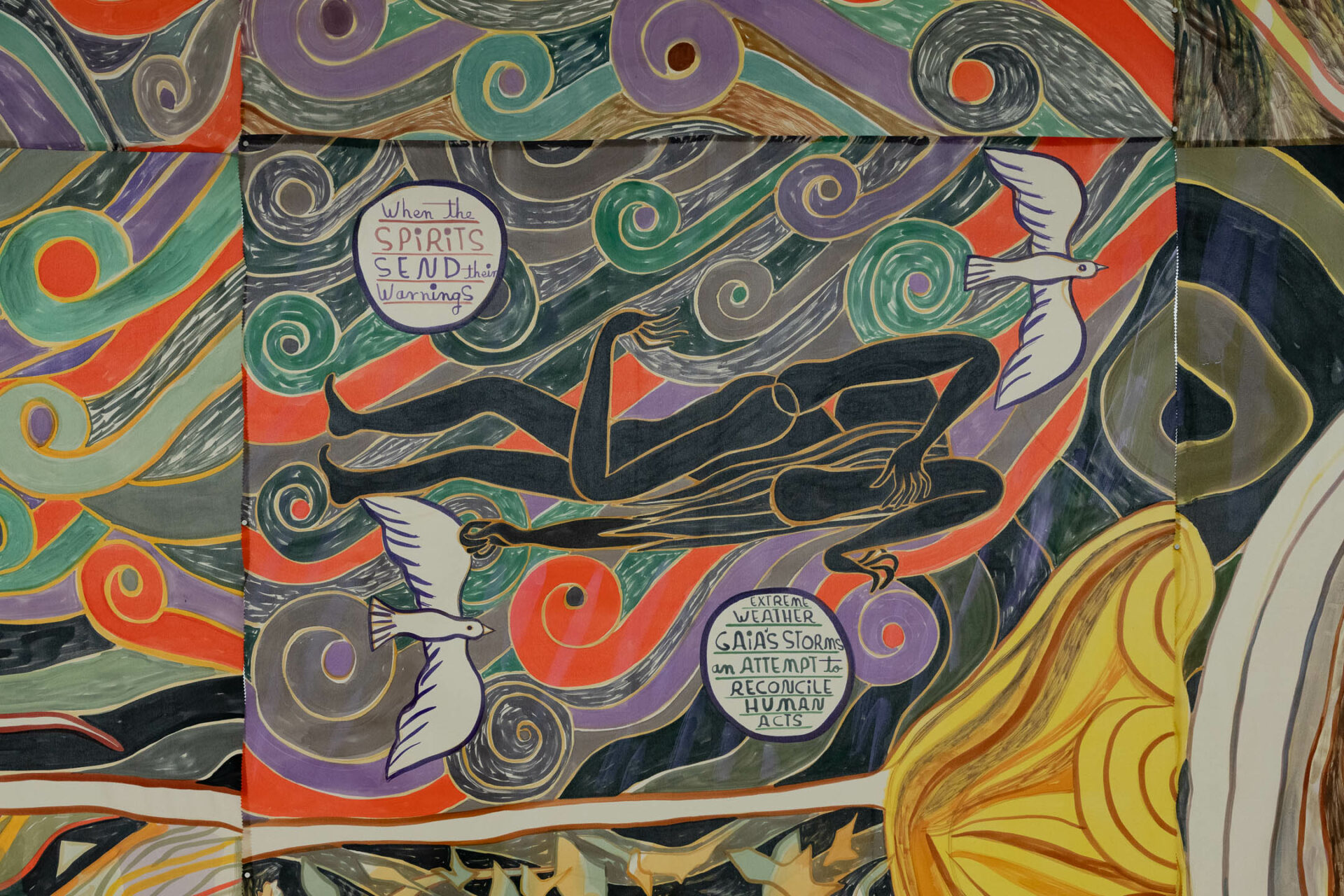
HJ: In the paintings, the center point between the two is an all-seeing eye that also serves as a double meaning for “I”, as you place yourself in the middle of the human life cycle. You’ve also openly discussed your reactions to depictions of aging and elderly women. In the video animation The Trials, you’ve reinterpreted the Labors of Hercules in which an elderly woman serves as a direct counter to the standard depiction of the hero. What is your relationship to the archetype of the hag/witch/crone? Why do you choose to center her in these works?
ET: The archetype of an elderly woman figure is one loaded with meaning – either celebrated for a kind of canny wisdom that quickly collapses into distrust (witches, crones in myth) or perceived as weak and incapable. I wanted to take an elderly woman and make her a protagonist, who had the most agency. Initially it was prompted by Klimt’s painting Three Ages of Woman, in which an elderly female figure stands naked, covering her face in shame. I wanted to redescribe her as strong, to reposition her in our consciousness. I was also imagining my own survival in a volatile future. So I decided she would perform the ultimate hero narrative – the Twelve Trials of Hercules. I noticed that all the trials of Hercules were ‘resolved’ through aggression, killing, capture, theft, colonization. I thought an elderly woman would attend to resolving these trials in ways that were more considered, caring and benevolent. In doing so, I realized the trials unpicked the dominant structures of power and it became a series of really interesting thought experiments.
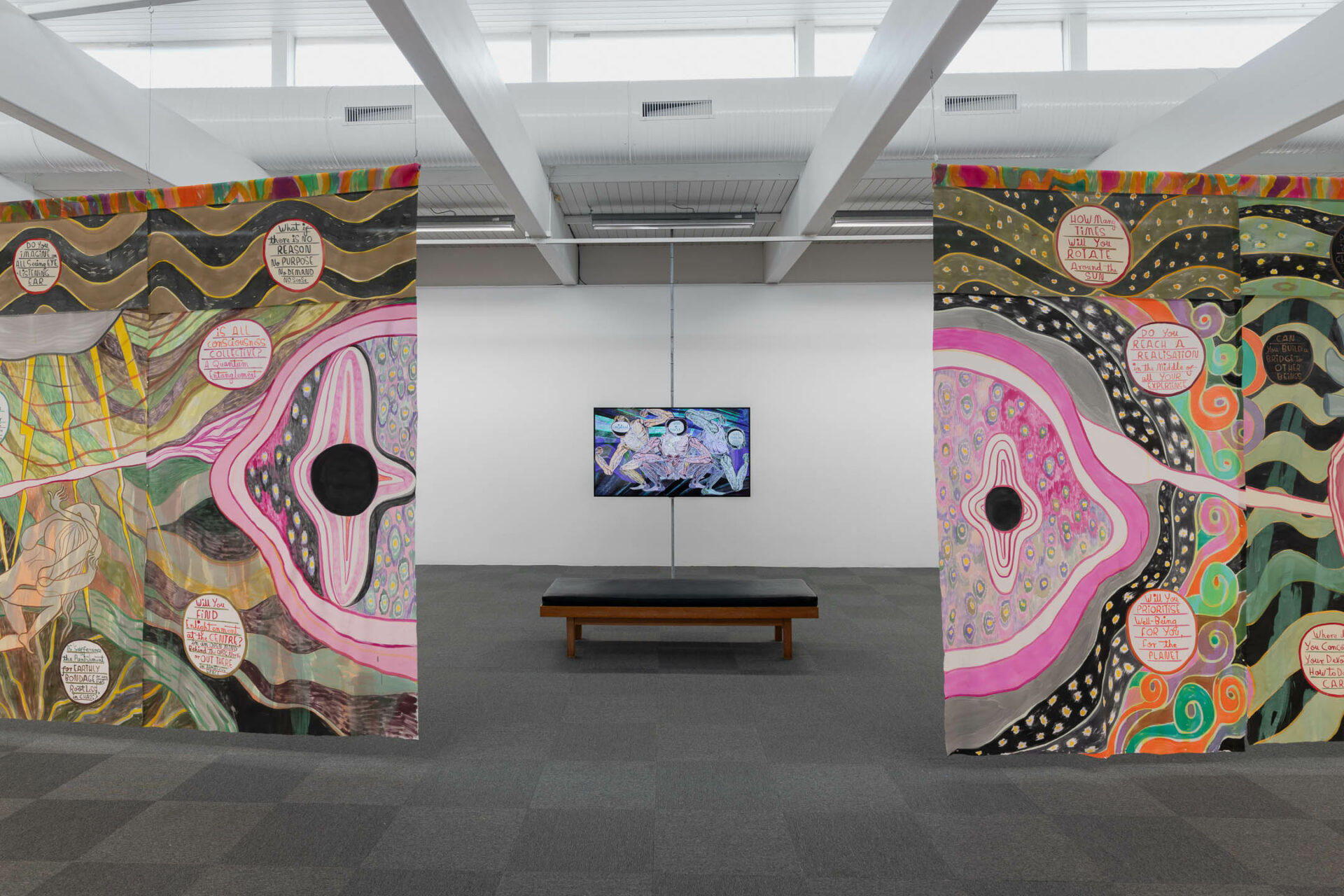
HJ: Many of your works illustrate a catastrophic reality – they’re terrifying! And yet also propose a paradigm shift and relay messages of hope. You seem to truly believe in the potential of creativity and humanity. What do you hope that viewers take away with them after spending time with your artwork?
ET: We live in terrifying times. We’re all individual actors who have no choice but to exist within the collective situations of our times. We’re confronted with scenes of excess everywhere we turn – extreme weather; floods, wild fires, tornados and political crises, levels of austerity and profit, war and corruption. Within this, we’re trying to find a way forward, to imagine survival, and this instinct is very strong. Our terrible stories are laced with moments of bravery and love and care. Without hope we wouldn’t be able to continue. Without sharing experience, we can’t understand. I think, I hope, I’m reflecting humanness in the work – as it is, and as it could be imagined.
HJ: Although your work is very approachable, you also often draw on specific artistic, mythical, and historical references. Can you describe your creative process? How do you gather inspiration and translate that into a final work?
ET: I follow what interests me. I start making very open drawings and see a set of thoughts emerging. Then I develop them through research – online searching, watching documentaries, listening to podcasts etc. I like to come up with ideas that involve complex narratives and leave open the space where sometimes I don’t initially understand how I can make sense of the thoughts I have, because that way I can come up with unexpected results and decisions. Through research I begin to find a way to visually structure my ideas. This is a really fun part of the work. I approach my work through curiosity – I want to learn and understand things, so my research can range through myth, history, biology, quantum physics, language or craft. I’m always pulling information into the work, because it interests me. I’m also always trying to extend the image making, so it isn’t something I’ve seen before.
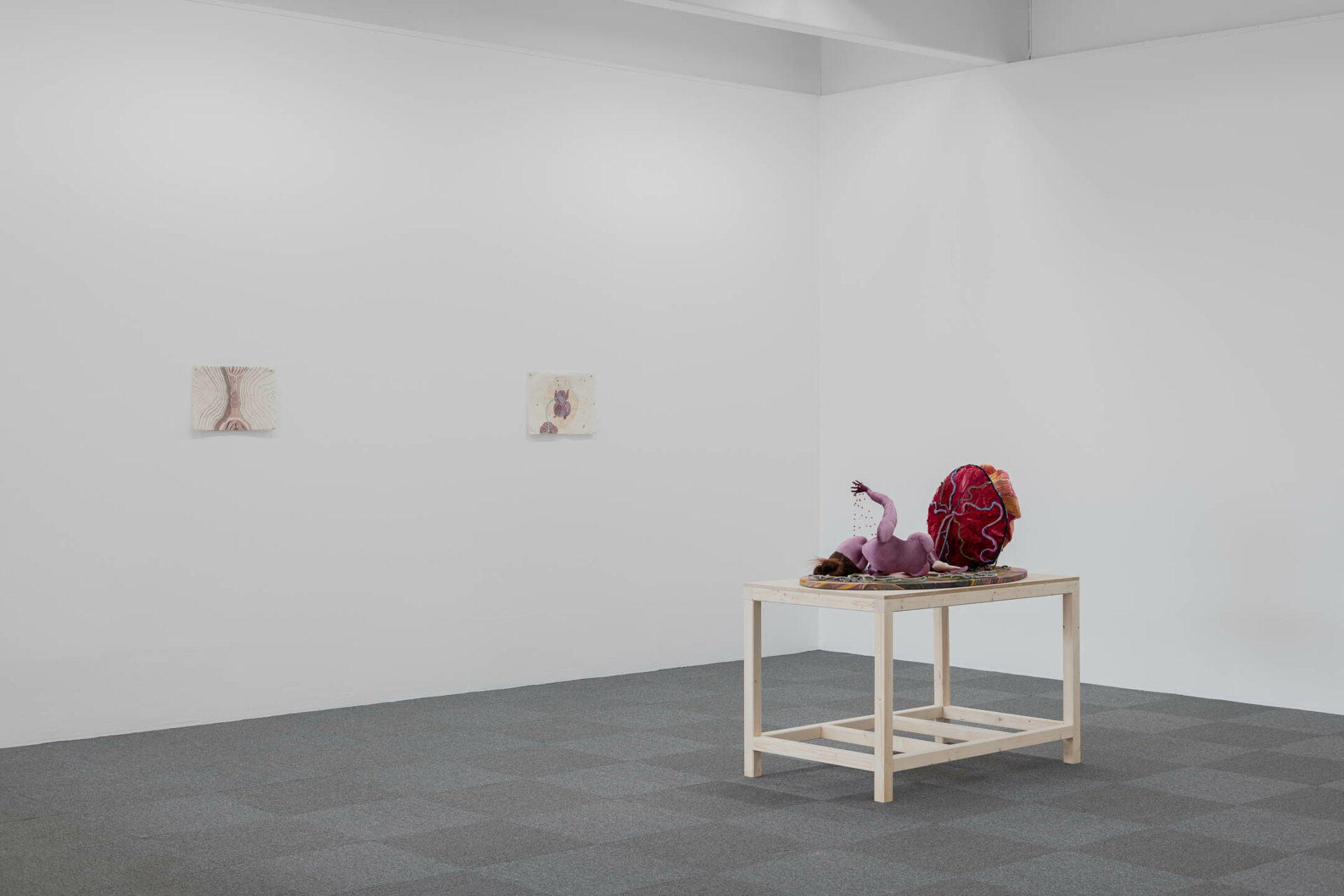
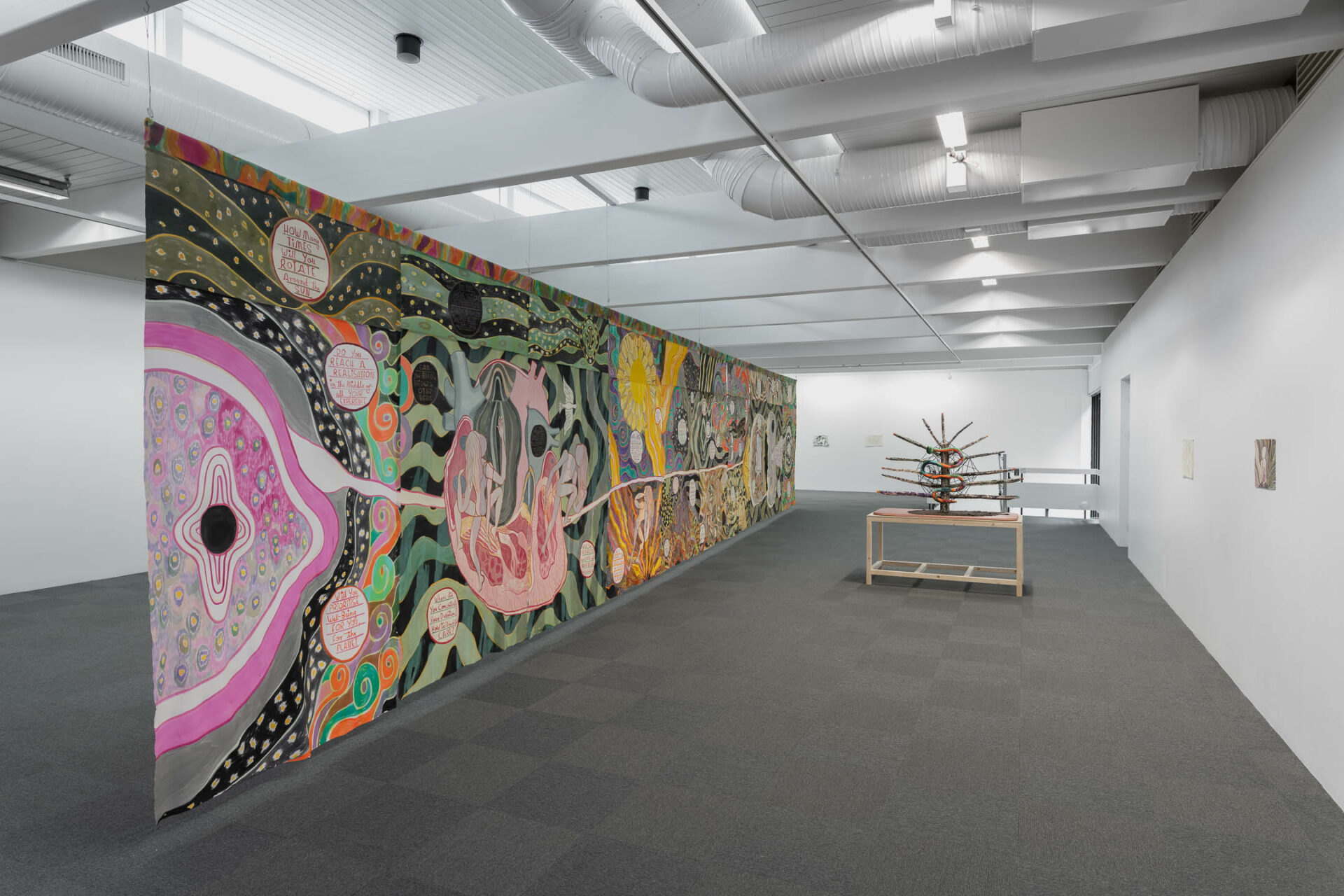
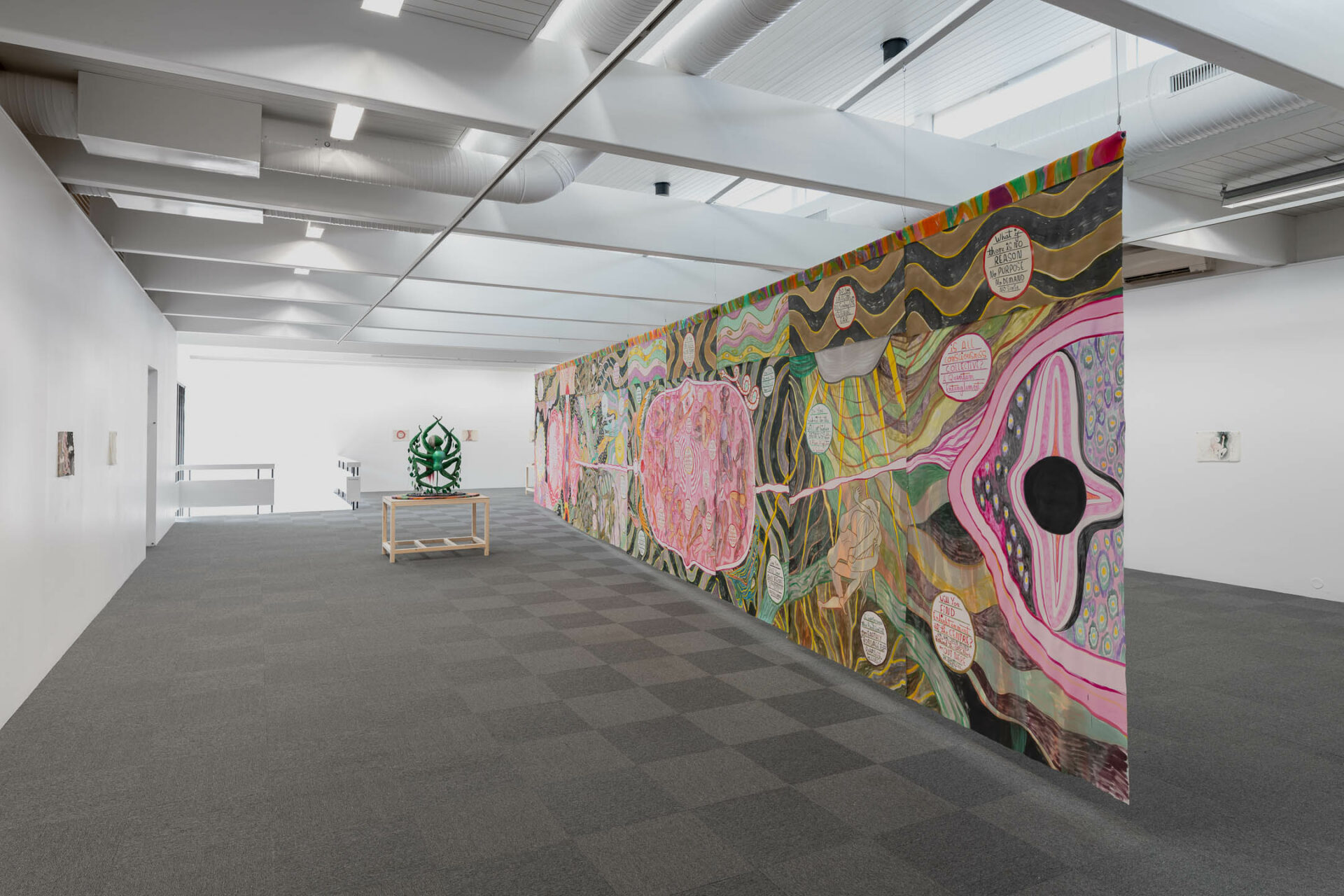
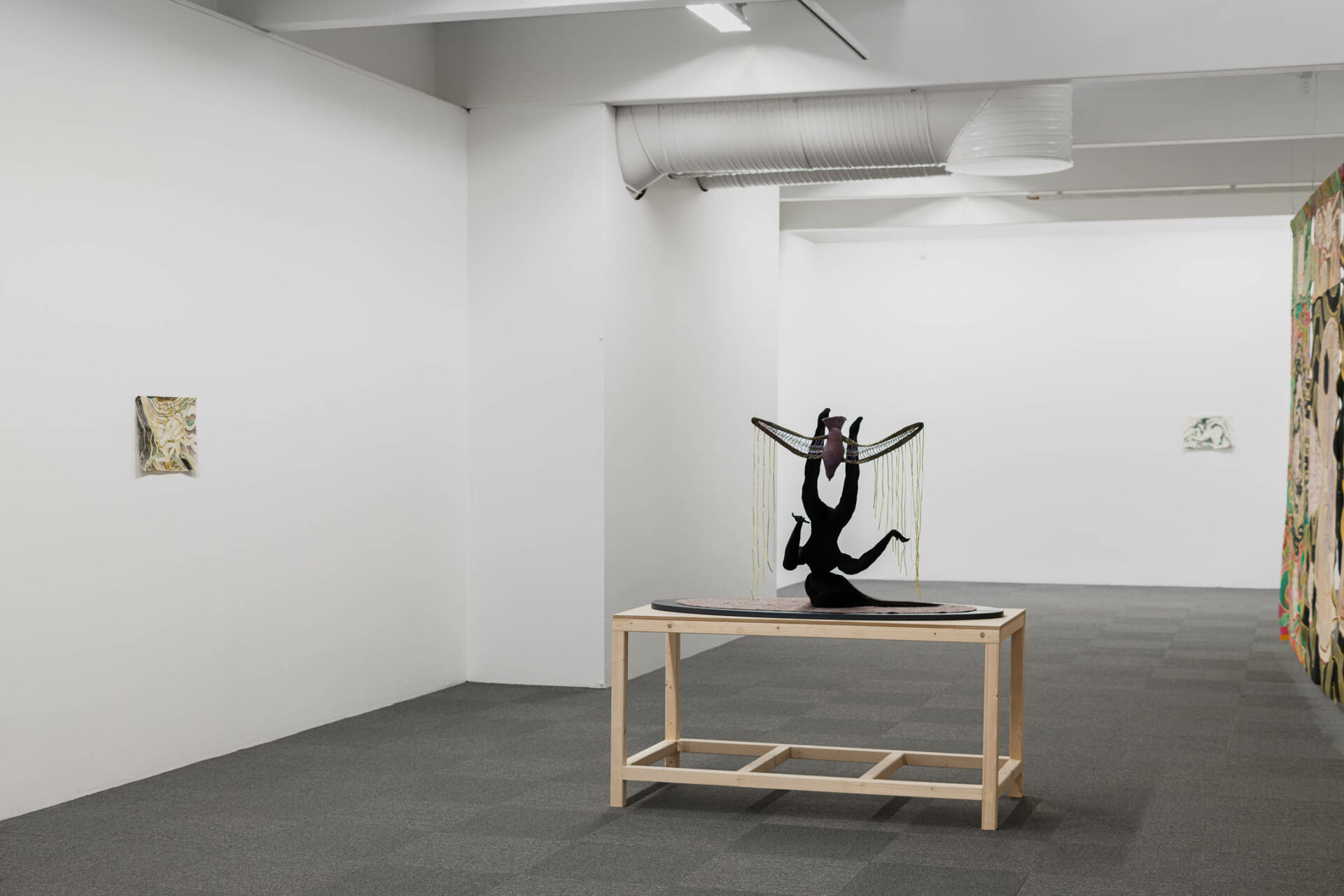
HJ: Your paintings often include written questions and quotes. What is the relationship between painting and writing in your practice, and image and text in the work?
ET: I used to use quotes from other sources such as poems and songs, but in recent years all the texts are my own. I like to play with language and try to find efficient phrases that include a lot of information. But they’re also short, like our text messages – so they carry the identity of our times. The texts propose ideas and ask questions, they don’t try to tell the viewer what to think. Sometimes thoughts are very verbal, other times pictorial – so the work is trying to reflect that.
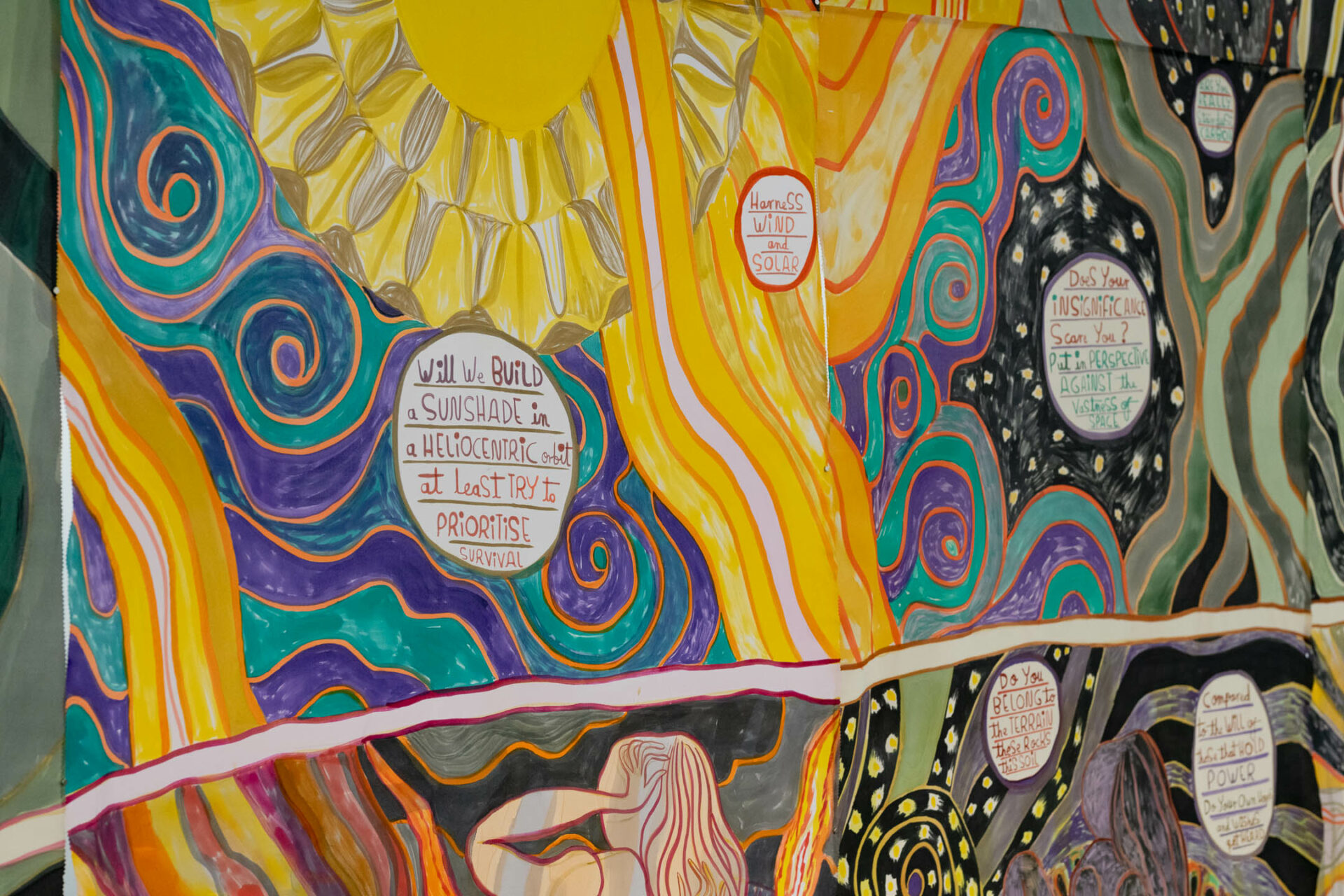
HJ: Where the large paintings on silk are all encompassing, the 3D works and drawings on view at the kunsthall are smaller and more intimate. How do you think about scale in your work?
ET: The painted hangings are conceived as a life. Our own lives fill our existence, so they had to be something that occupied the space fully. There’s a break at the centre, as you say, like an eye or an I of the self – a break where the interior self meets the exterior world. The scale of the work really does depend on the idea/concept of the work. How much things need to be human-size or not is a consideration. The 3D works are focused crystallisations of ideas, literally like 3d drawings, so they are the scale that makes that work.
HJ: Are there any upcoming projects or ongoing research that you can share with us?
ET: I’m just about to install an exhibition in a huge space in Berlin, Kindl Museum. They have a space called Kesselhaus, which is giant, and I have made enormous painted hangings and 3D works for the space. The show opens in September for Berlin Art week and continues until May 2024. I’m also showing this year at The Model, Ireland, Museum Folkwang, Essen Germany, The Louisiana Museum and Aros Museum Denmark, Kunsthalle Giessen and Kunstmuseum Bonn in Germany and Dordrechts Museum, Krona and Nest in Holland.
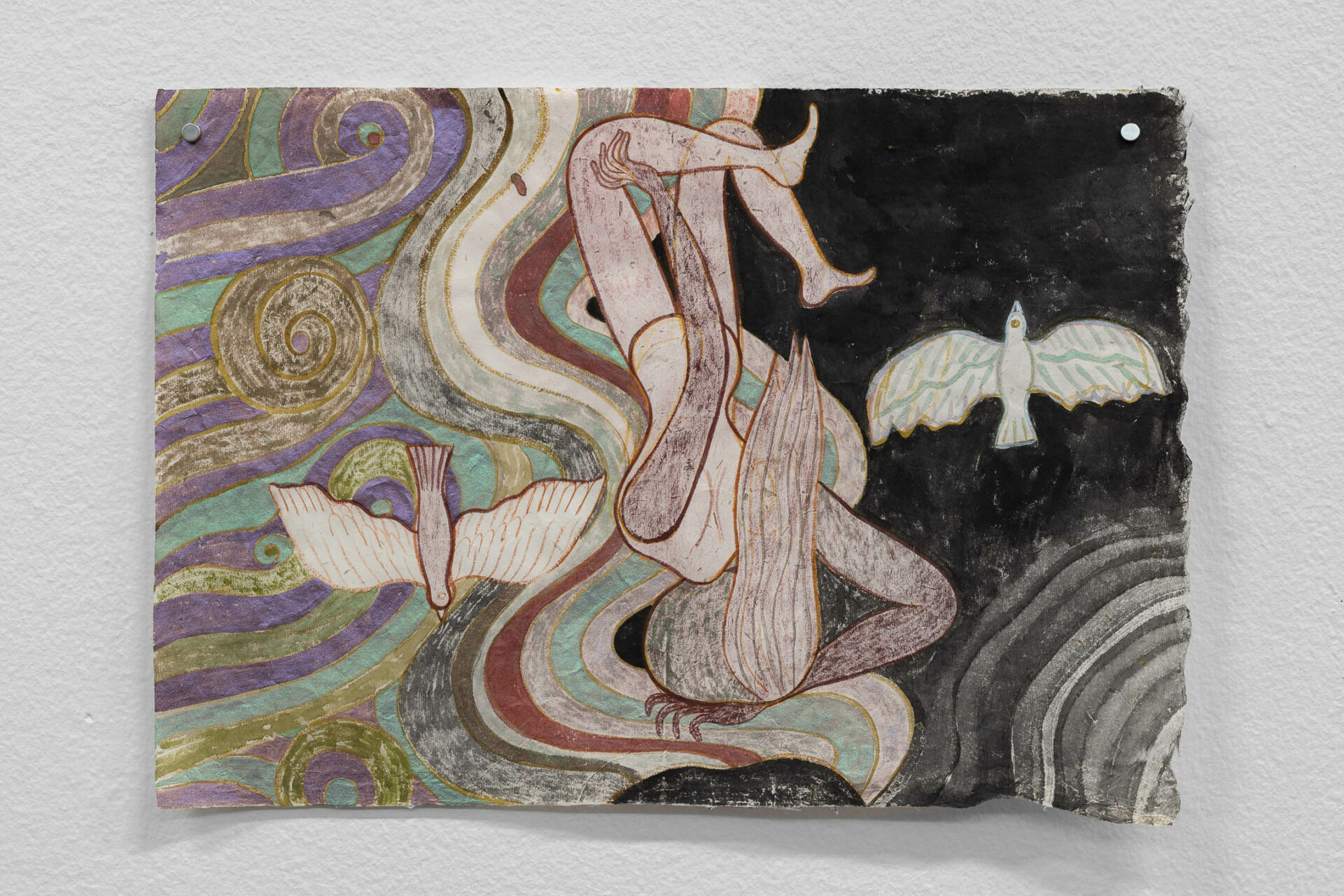
Emma Talbot (b. 1969, Stourbridge, lives and works in London) is the winner of the 8th Max Mara Art Prize for Women and was included in The Milk of Dreams at the Venice Biennale in 2022. Her work has previously been exhibited at Whitechapel, London; Collezione Maramotti, Italy; Beiqiu Museum, China; Victoria Miro, London; Eastside Projects, Birmingham; Kunsthaus Centre D’Art Pasquart, Switzerland; Arcadia Missa, New York; KM21, The Hague, Netherlands; Turner Contemporary, Margate; The Freud Museum; London; Lisson Gallery, London; Galerie Onrust, Amsterdam; Petra Rinck Galerie, Düsseldorf; Neuer Aachener Kunstverein, Germany and Tate St.Ives, England. Talbot studied at Birmingham Institute of Art & Design og Royal College of Art in London.


